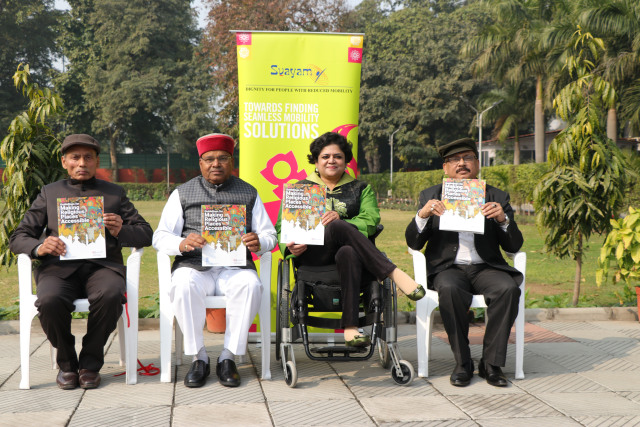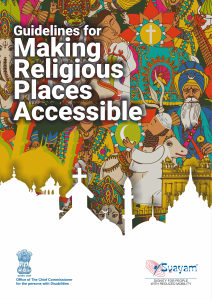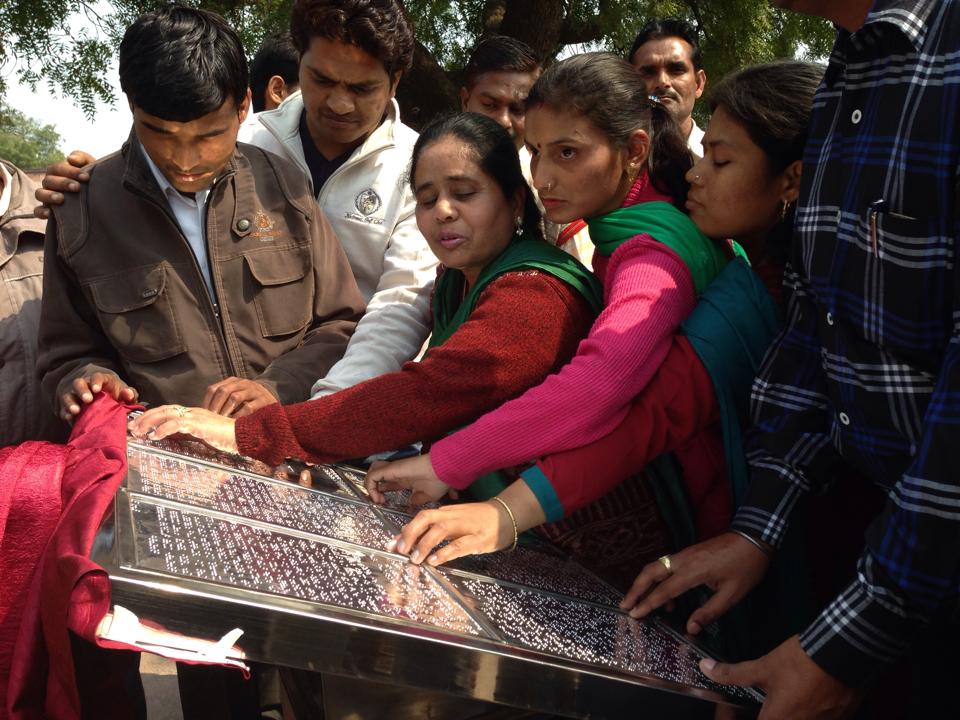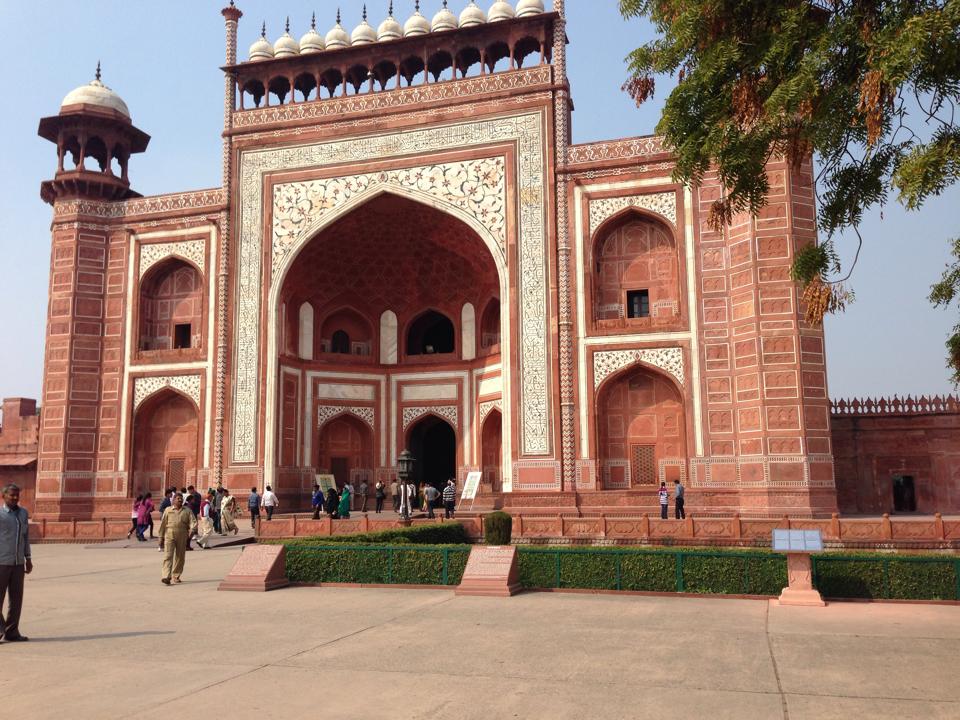Shri Thawarchand Gehlot, Honourable Union Minister for Social Justice and Empowerment, Government of India (GOI), and Ms. Sminu Jindal, Founder, Svayam, jointly unveiled “Guidelines for Making Religious Places Accessible” in New Delhi on 25 January 2019.

In photo (From Left to Right) – Dr. Kamlesh Pandey (Chief Commissioner for Persons with Disabilities), Mr. Thawarchand Gehlot (Union Minister, Govt of India) & Ms. Sminu Jindal (Founder-Svayam), and Sh. SK Prasad, Dy. CCPD, jointly unveiling the Svayam authored booklet: “Guidelines for Making Religious Places Accessible” on 25 Jan 2019 in New Delhi.
Prepared by Svayam, the Guidelines were jointly published by Svayam and the Office of the Chief Commissioner for Persons with Disabilities (CCPD).

Cover page of the Guideline on Making Religious Places Accessible
As accessibility helps not only the devotees with disabilities, but also the elderly, women, sick and injured believers/worshipers, this Booklet can help set new benchmarks of accessible and inclusive religious places. The Guidelines can help management committees overseeing religious sites in providing minimum accessibility features at their shrines/ place of worship.
While unveiling the guidelines, Shri Gehlot said, “The Guidelines is a big step towards honouring the tenets of the Rights of Persons with Disabilities (RPWD) Act 2016, and may also add strength to the ongoing Accessible India Campaign.”
Speaking on the occasion, Ms. Sminu Jindal, Founder – Svayam, said, “Every religion teaches us that all humans have equal rights to seek God and pray at their chosen places. I hope the management committees of various religious places take advantage of the recommendations/tips given in this first-of-its-kind booklet in the country to achieve universal accessibility standards to make their shrines accessible, so that no one is left behind in their pursuit of spirituality.”
Dr. Kamlesh Kumar Pandey, Chief Commissioner for Persons with Disabilities, said: “Considering the mandate of the Office of CCPD and provisions of the RPwD Act 2016, we are happy to join hands with ‘Svayam’. Based on the National Standards, the present guidelines are in short, crisp and easy-to-implement format.”
Mr. Pandey added that, he would urge all the State Commissioners for Persons with Disabilities to ensure accessibility at religious places in their respective states based on these guidelines.
केंद्रीय मंत्री ने स्वयम की पुस्तिका “धार्मिक स्थानों को सुगम्य बनाने के लिए दिशानिर्देश” का अनावरण किया
नई दिल्ली | 25 जनवरी 2019
25 जनवरी 2019 को, श्री थावरचंद गहलोत, माननीय केंद्रीय मंत्री, सामाजिक न्याय एवं अधिकारिता मंत्रालय, भारत सरकार, एवं सुश्री स्मिनू जिन्दल, संस्थापक, स्वयम, ने संयुक्त रूप से “धार्मिक स्थलों को सुगम्य बनाने के लिए दिशानिर्देश” पुस्तिका का अनावरण नई दिल्ली में किया।
स्वयम ने ऑफिस ऑफ़ चीफ कमिश्नर फॉर पर्सन्स विद डिसैबिलिटीज (सी.सी.पी.डी.) के साथ साझेदारी करते हुए इस पुस्तिका का प्रकाशन किया।
पुस्तिका का विमोचन करते हुए केंद्रीय मंत्री श्री गहलोत जी ने कहा, “यह दिशानिर्देश ‘दिव्यांग अधिकार अधिनियम 2016 (RPWD Act)’ के नियमों एवं सिद्धांतों को ज़मीन पर उतारने की ओर एक बड़ा और सही कदम है। इस पुस्तिका का लेखन एवं प्रकाशन करके ‘स्वयम’ ने भारत सरकार द्वारा चलाये जा रहे ‘सुगम्य भारत अभियान’ को भी गति देने का एक सराहनीय कार्य किया है।”
सुश्री स्मिनू जिन्दल ने टिप्पणी करते हुए कहा: “ सभी मनुष्यों को उनके द्वारा चुने हुए स्थानों पर ईश्वर की तलाश करने और प्रार्थना करने का समान अधिकार है। मुझे उम्मीद है कि विभिन्न धार्मिक स्थानों की प्रबंधन समितियां अपने धार्मिक स्थलों को सुगम्य बनाने के लिए इस पुस्तिका में दी गई मानकों का इस्तेमाल करेंगे, ताकि कोई भी अध्यात्म की खोज में पीछे न रह जाए।”
डॉ. कमलेश कुमार पाण्डेय, सी.सी.पी.डी., सामाजिक न्याय एवं अधिकारिता मंत्रालय, भारत सरकार, ने कहा: “ऑफिस ऑफ़ सी.सी.पी.डी. ‘दिव्यांग अधिकार अधिनियम 2016 (RPWD Act)’ के प्रावधानों को ध्यान में रखते हुए ‘स्वयम’ के साथ हाथ मिलाया है। राष्ट्रीय मानकों के आधार के साथ, यह पुस्तिका संक्षिप्त है और इसमें आसानी से लागू होने वाले प्रारूप/मानक दिए हुए हैं। हमें उम्मीद है कि विभिन्न धर्मों से संबंधित लोग अपने धार्मिक स्थलों को सभी के लिए सुगम्य बनाने के लिए इसकी मदद लेंगे और इसके बारे में प्रचार-प्रसार भी करेंगें।”
श्री पांडे ने कहा कि, वे सभी राज्य आयुक्तों (दिव्यांगजन) से आग्रह करेंगे कि वे इन दिशानिर्देशों के आधार पर अपने-अपने राज्यों में धार्मिक स्थानों पर सुगम्यता सुनिश्चित करें|



